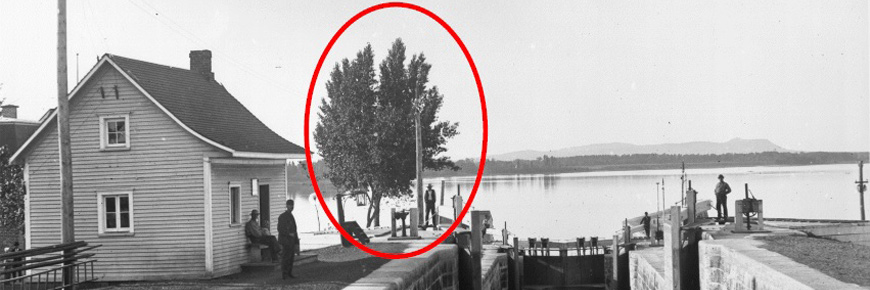
The Canal’s plant life and cultural landscape
Chambly Canal National Historic Site
The Chambly Canal is a waterway constructed entirely by humans. The water is the central thread running through the historic site. Near the cottonwood’s location, the waterway is punctuated by a series of locks or combined locks.
Just as this magnificent tree was for the Canal during all these years, the plant life can be considered a key feature of an historic site. During the previous century, the area immediately surrounding the locks was kept free of all vegetation for operational and waterway maintenance reasons. In 1892–1893, the structure was modified, as well as its immediate environment (planting of a number of trees and addition of features such as a water fountain and drainage swales).
As shown in the photo, the cottonwood was on the grounds that, in 1904, housed the Chambly Canal office (which in 1914 became the Superintendent’s House). It was already flourishing there in all its splendour.

In this area of combined locks Nos. 1, 2 and 3 and the Superintendent’s House, in can be said that the plant life is a feature that has defined the landscape since at least the late 19th century.
These transformations show that the Canal’s cultural landscape is a dynamic entity that is constantly changing, as a result not only of natural processes, but also of human influence. An important page in the history book is therefore turning for the Chambly Canal and its visitors, as well as for the Municipality of Chambly.
- Date modified :